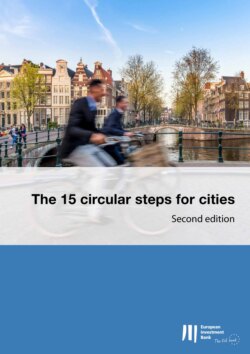Читать книгу The 15 circular steps for cities - Second edition - Группа авторов - Страница 5
На сайте Литреса книга снята с продажи.
Why a circular economy?
ОглавлениеWith a quickly growing global population and prosperity, the increasing consumption and related extraction of often scarce and finite resources is unsustainable. This prompts a shift from our current linear take-make-use-dispose production and consumption approach to a more circular economy, where we maximise the use and utility of resources, products and assets, and minimise resource consumption and wastage in all forms.
In its most simple form, the circular economy transition can be depicted in the following way.
The transition from a linear to a circular economy
The transition to a circular economy not only conserves resources, but also reduces environmental and climate impacts. At the same time, it fosters innovation and thereby increases competitiveness and creates new jobs.
While this approach may seem new and revolutionary, the “Waste Not” mantra of the circular economy was a central principle in our society until the industrial revolution introduced a culture of mass production, consumption and disposal. In a sense, the transition to a circular economy therefore involves going forward to the past.
